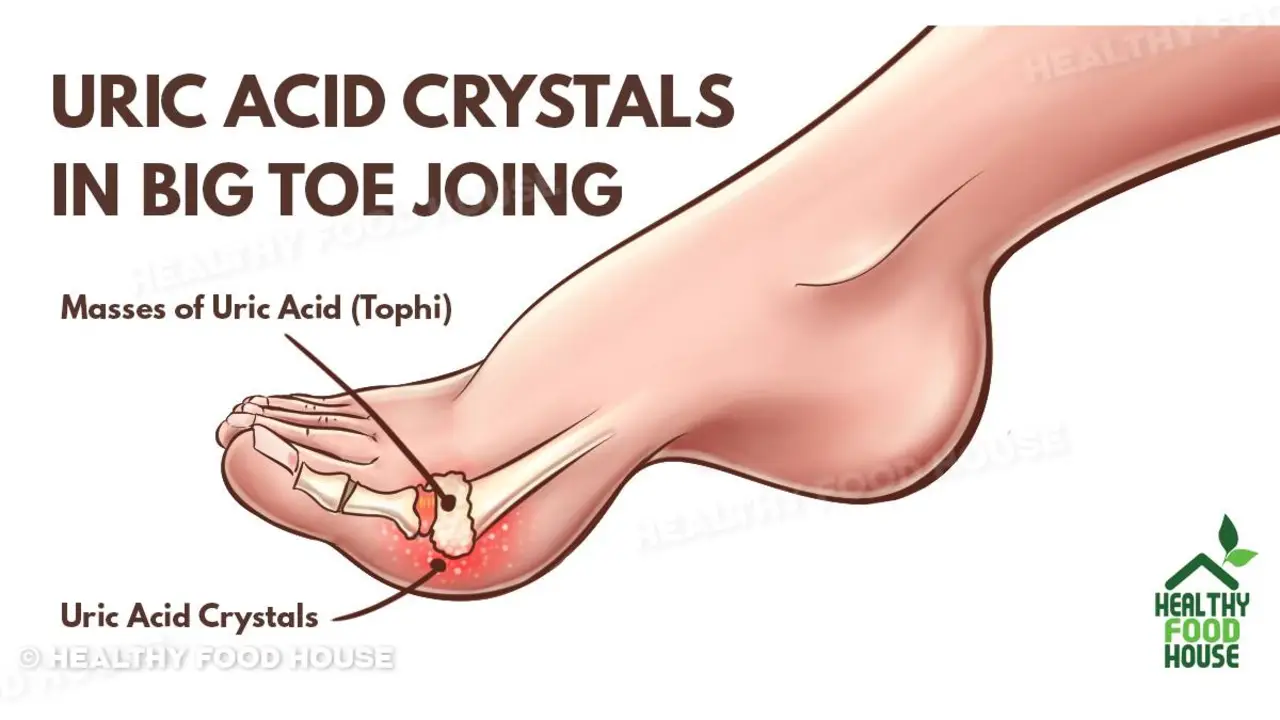High uric acid (hyperuricemia) can sit quietly for years or show up suddenly as painful gout or kidney stones. You don’t need to panic, but you do need a plan. Below are clear steps you can use right away and habits that make a lasting difference.
Drink water. Aim for at least 8–10 cups a day unless your doctor tells you otherwise. Staying hydrated helps your kidneys flush uric acid faster.
Cut sugary drinks and fruit juices. Fructose raises uric acid quickly — swap soda and sweetened drinks for water, sparkling water, or unsweetened tea.
Stop or cut back on alcohol, especially beer and spirits. Alcohol interferes with uric acid removal and triggers gout attacks.
Avoid high-purine foods for a few weeks: organ meats (liver, kidneys), anchovies, sardines, mussels, and some shellfish. Red meat and game can also raise levels — try to limit these to small portions or fewer days a week.
If you have a gout flare, rest the joint, apply ice, and see your doctor. For short-term relief you may be prescribed NSAIDs, colchicine, or a steroid; take them exactly as directed.
Focus on weight and movement. Losing even 5–10% of body weight can lower uric acid. Walk, bike, or do home workouts most days — consistent activity helps insulin sensitivity and kidney function.
Choose smarter proteins: swap frequent red meat meals for fish that are lower in purines (like salmon), eggs, low-fat dairy, or plant proteins such as lentils and tofu. Plant proteins don’t raise gout risk the way meat does.
Eat cherries or berries and get enough vitamin C. Some people find cherries help reduce flare frequency; vitamin C can modestly lower uric acid when taken in usual supplement doses. Talk with your clinician before starting new supplements.
Review your medicines. Some drugs (certain diuretics, low-dose aspirin) can raise uric acid. Don’t stop medication on your own — ask your doctor whether alternatives exist.
Get tested and set a target. A blood test tells your level. For people without gout, typical lab ranges fall roughly between 3.5–7.2 mg/dL, and doctors often aim for <6 mg/dL if gout has occurred. Your target may differ based on your health and kidney function.
If lifestyle changes aren’t enough, medication like allopurinol or febuxostat can lower uric acid safely for most people. Your doctor will explain benefits, side effects, and monitoring. Never start or stop these drugs without medical advice.
When to see a doctor now: repeated joint pain, a very painful swollen toe or ankle, blood uric acid consistently high on tests, or kidney stones. Early care prevents damage and keeps you moving.
Small, steady changes work best: drink more water, cut sugary drinks and beer, reduce red meat, move more, and talk to your doctor about tests and meds. You’ll feel better and cut the chance of painful flares.

Hi there, gentlemen! In today's blog post, we're going to tackle some of the most common myths and misconceptions surrounding high uric acid levels and gout. I bet you've heard many of them before, but rest assured, our aim is to debunk these myths and arm you with the facts. Let's navigate this journey together, separating fact from fiction when it comes to your health.
Learn how blood cancers weaken immunity, why infections happen, and practical steps-from hygiene to medical prophylaxis-to keep you safe.
Learn everything about Penegra - what it treats, how to take it, possible side effects, drug interactions, and safety tips for 2025.
A detailed side‑effect, cost and efficacy comparison of Prograf (tacrolimus) with generic tacrolimus, cyclosporine, sirolimus and mycophenolate for transplant patients.
Sudden shortness of breath could be a sign of pulmonary embolism - a life-threatening blood clot in the lungs. Learn the key symptoms, how doctors diagnose it, and why acting fast saves lives.
What transit actually does to cut gridlock. Clear mechanisms, real numbers, case studies, and a step-by-step playbook cities can use in 2025.